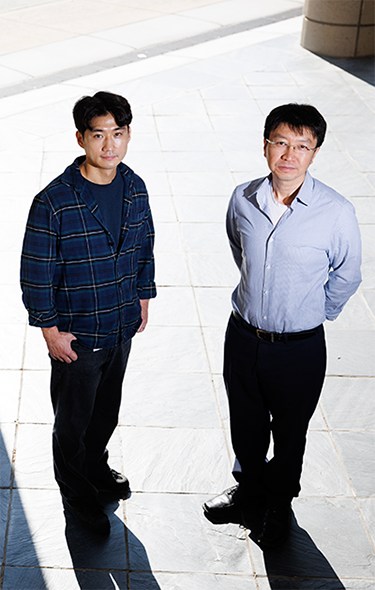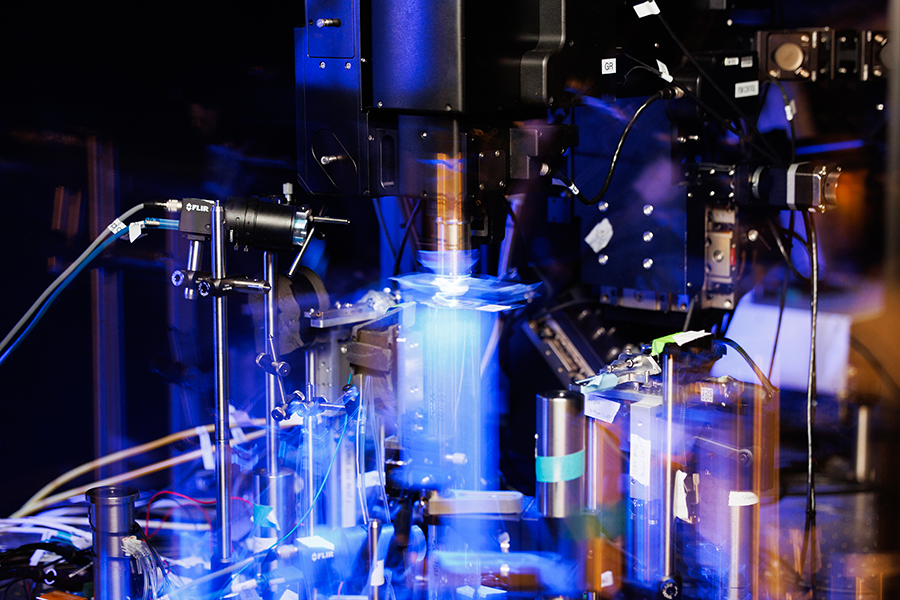
One Way Your Brain Beats AI: Learning Motor Tasks
If you learn to ride a bike as a child, then don’t ride for years, you’re likely to be able to pick it back up as an adult without missing a beat. And if you later learn a similar motor skill, like how to roller skate, the new memory doesn’t interfere with the old one.
How does our brain manage these feats? New research from Duke University School of Medicine shows that the process is more complex and requires more storage capacity than previously thought.
Using a novel technique for tracking learning and recording brain activity long term in mice, researchers led by Nuo Li, PhD, associate professor in the Duke Department of Neurobiology, found that when learning to perform an action, the brain stores not only the memory of the task, but also the specific context in which the action is performed. That means that the brain stores multiple copies of memory, even for the same action, he said.
“This ability to continuously acquire new skills without forgetting old ones comes naturally to humans but is a major challenge for artificial intelligence.”
- Nuo Li, PhD, neuroscientist at Duke University School of Medicine
The researchers also observed that these memory “modules” were remarkably stable, lasting for nearly the mouse’s whole lifetime.
“New learning takes place in separate modules while existing memories are protected,” Li said. “Our neural connections are constantly subject to modification. The fact that these connections are so stable is remarkable.”
The results were published November 13 in the journal Nature.
The discovery can inform the development of neural prosthetics, such as an artificial limb that receives signals from the brain.
“This ability to continuously acquire new skills without forgetting old ones comes naturally to humans but is a major challenge for artificial intelligence,” said Li, a Duke Science and Technology Scholar. “In machine learning, learning new tasks leads to updates to model parameters that affect existing memories, a phenomenon known as catastrophic forgetting.”

Collaborator Kayvon Daie, PhD, of the Allen Institute for Neural Dynamics in Seattle, Washington, tried to replicate what Li’s team had found in mice using a neural network — an interconnected set of computing nodes. He found that the standard type of network used in most artificial intelligence applications couldn’t cut it.
Instead, Daie had to use a relatively new type of network, a feed-forward network with memory capacity, to store information in the same “combinatorial” fashion as our brains.
Duke postdoctoral associate Jae-Hyun Kim, PhD, the first author of the study, recorded activity in the same motor neurons in mice for much longer than has previously been accomplished. “We used microscopes to look at the activity of the neurons during motor behaviors, and we tracked the same neurons for up to 6 months, which would be equivalent to 20 years of a human lifetime,” Kim said.

In addition, previous studies of motor learning in mice mostly examined activity within a single task. Li’s team developed a method to continuously track brain activity as mice learned similar actions across multiple, different tasks.
The team’s new findings contradict the previous thinking in the field but make intuitive sense, Li said.
Think about trying to enter your computer password; you may need to be at your keyboard and typing to fully remember it, because that is how you learned it. “Typing your password requires you to activate some neurons that represent that experience, not just the motor act itself. When we learn to do something, we tend to learn by examples. So, if we try to perform those motor acts out of context, we tend to do very badly,” Li said.
Next, the researchers want to find out where in the brain the specific connections are made to store these memories. They are looking at a part of the brain called the cerebellum. “Even though this brain structure is very small, it contains over half of your brain cells,” Li said, “We think that if there’s one place in the brain that has the necessary resources to support this kind of storage, it will be the cerebellum, and in particular, the granule cells.”
Li was formerly at Baylor School of Medicine before joining the faculty at Duke School of Medicine in July. He will continue to focus on the neural circuits that drive voluntary movement, but with an expanded scope that includes the intricate connections between movement and cognition.
The implications of his research extend far beyond understanding basic movement. Li explains that the same brain regions involved in controlling our physical actions are also engaged in higher-order thinking processes.
“There’s a fascinating overlap between the neural circuits that govern movement and those that support cognition. This link offers a new perspective on how we can approach both motor and cognitive disorders,” he said.
He said his move to Duke provides his lab with a broad ecosystem of colleagues in neuroscience, psychiatry, and clinical science that will be conducive to taking basic discoveries like this one and applying them to create better interventions.

Angela Spivey is a senior science writer and managing editor in the Office of Strategic Communications.
Photos by Eamon Queeney, assistant director of multimedia & creative
